New data on the city’s early medieval phase have emerged in Lecce ’s historic center thanks to an urban archaeology operation launched last June by the Soprintendenza Archeologia Belle Arti e Paesaggio for the provinces of Brindisi, Lecce and Taranto, in collaboration with the municipality. The operation, financed by the General Directorate of Archaeology Fine Arts and Landscape of the Ministry of Culture, is part of the annual plan intended for investigations and activities aimed at the protection of areas of archaeological interest. The aim is to increase knowledge about the city’s past, particularly a poorly documented period between the fall of the Western Roman Empire and the Norman period.
The excavation focused on an area between Piazza Sant’Oronzo and Via Alvino, not far from the portion of the Roman amphitheater visible today. As early as the end of 2024, during municipal works for the redevelopment of street levels, the removal of the paving had brought to light some elements of the ancient monument, including part of the cavea, the annular wall, radial septa and three perimeter pillars. The presence of the remains was expected, since it was a widely known building. What came as a surprise, however, was the emergence of mighty wall structures set back from the amphitheater, outside its perimeter and on its northern side, which attracted the attention of archaeologists.
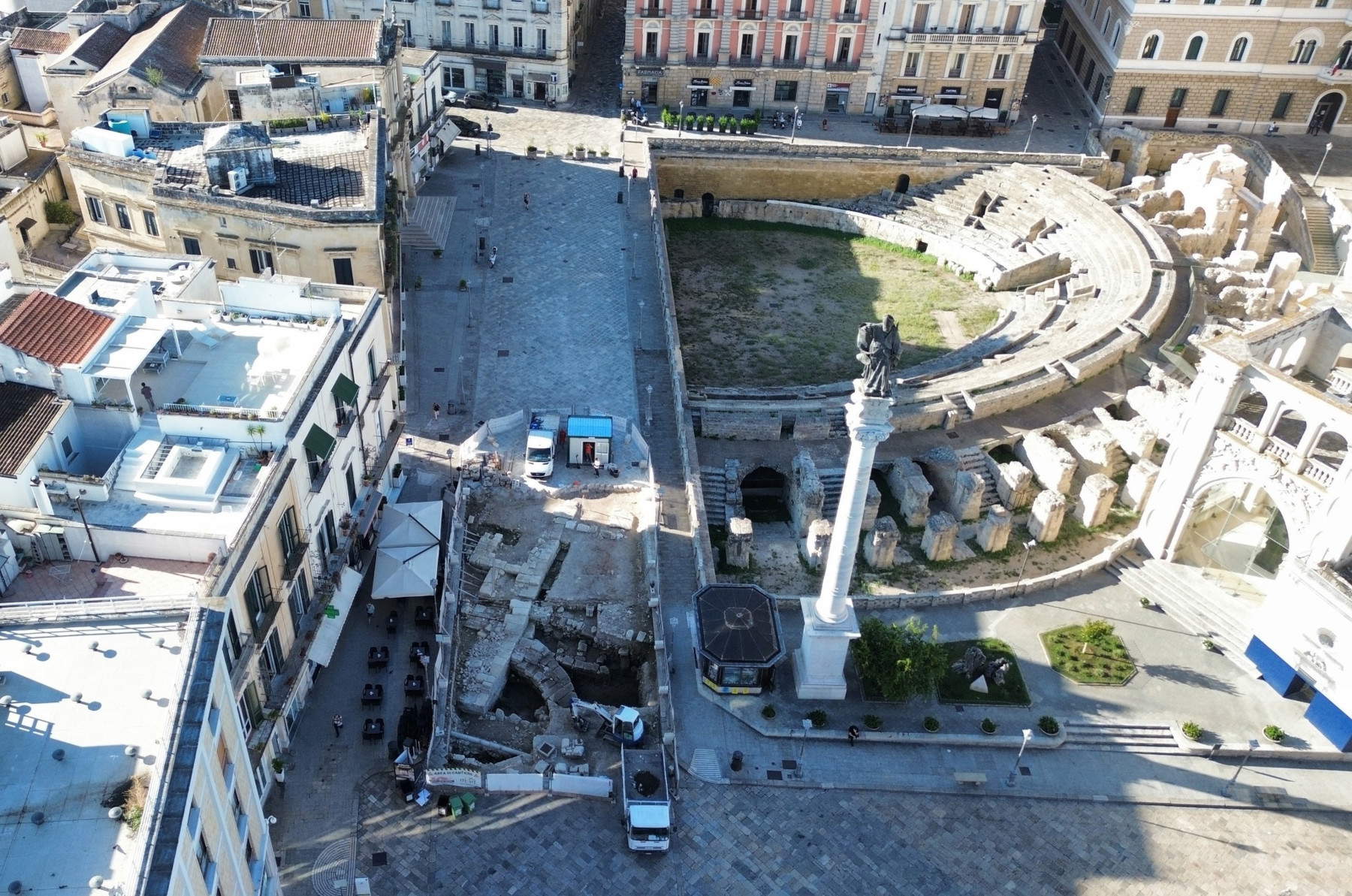
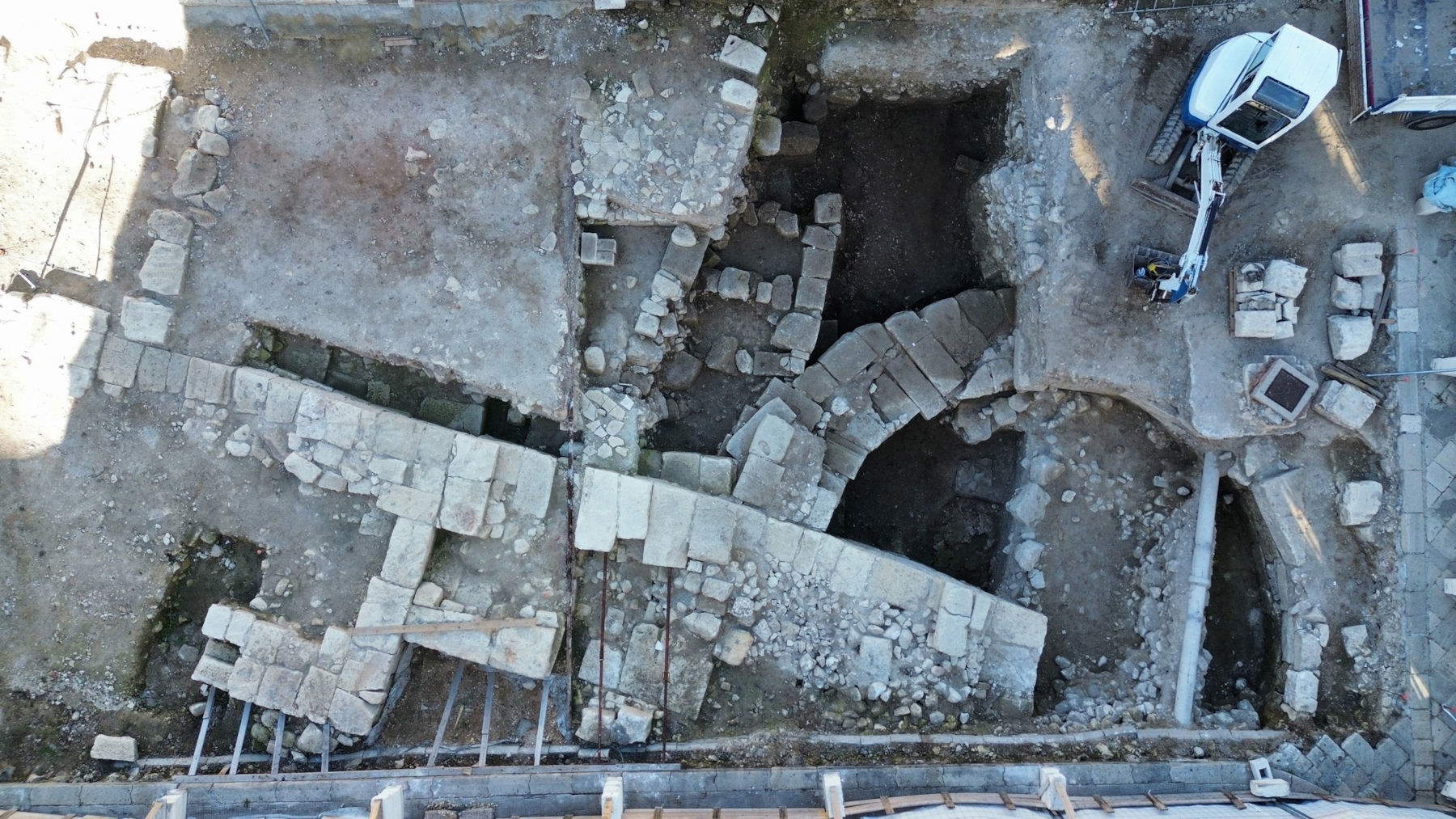
Investigations conducted in recent months have clarified the nature of the structures, which can be traced back to afortification built in two distinct phases. The fortification leaned against the amphitheater, incorporating part of its mass. The most obvious element is a mighty wall, about 3.70 meters wide, built using the so-called “sack” technique. It is a masonry with earthen and rubble fill enclosed by two facings. The blocks used in the facing came from the dismantling of the amphitheater itself and from other buildings in the area. In some sections the wall is preserved for more than two meters in height. Its origin coincides with the perimeter pillars of the amphitheater, to which it abuts. From there it runs northward for about sixteen meters, bends at right angles and continues eastward, under the modern blocks bordering Piazza Sant’Oronzo.
Stratigraphic analyses indicate that the construction of this defensive system can be placed between the 5th and 6th centuries CE, in a phase characterized by strong political and military instability. At that time the amphitheater was no longer intended for public performances: the spread of Christianity and the decree of Emperor Honorius in 404, which had banned gladiatorial ludiatorii, public games of the Roman world in arenas, had already sanctioned its functional decline. In a second phase, also in the early medieval period, the fortification was strengthened with the addition of a circular tower, about twelve meters in diameter, placed at the point where the wall describes the corner. Again, reused blocks laid dry were used, following a technique that exploited materials already available locally.
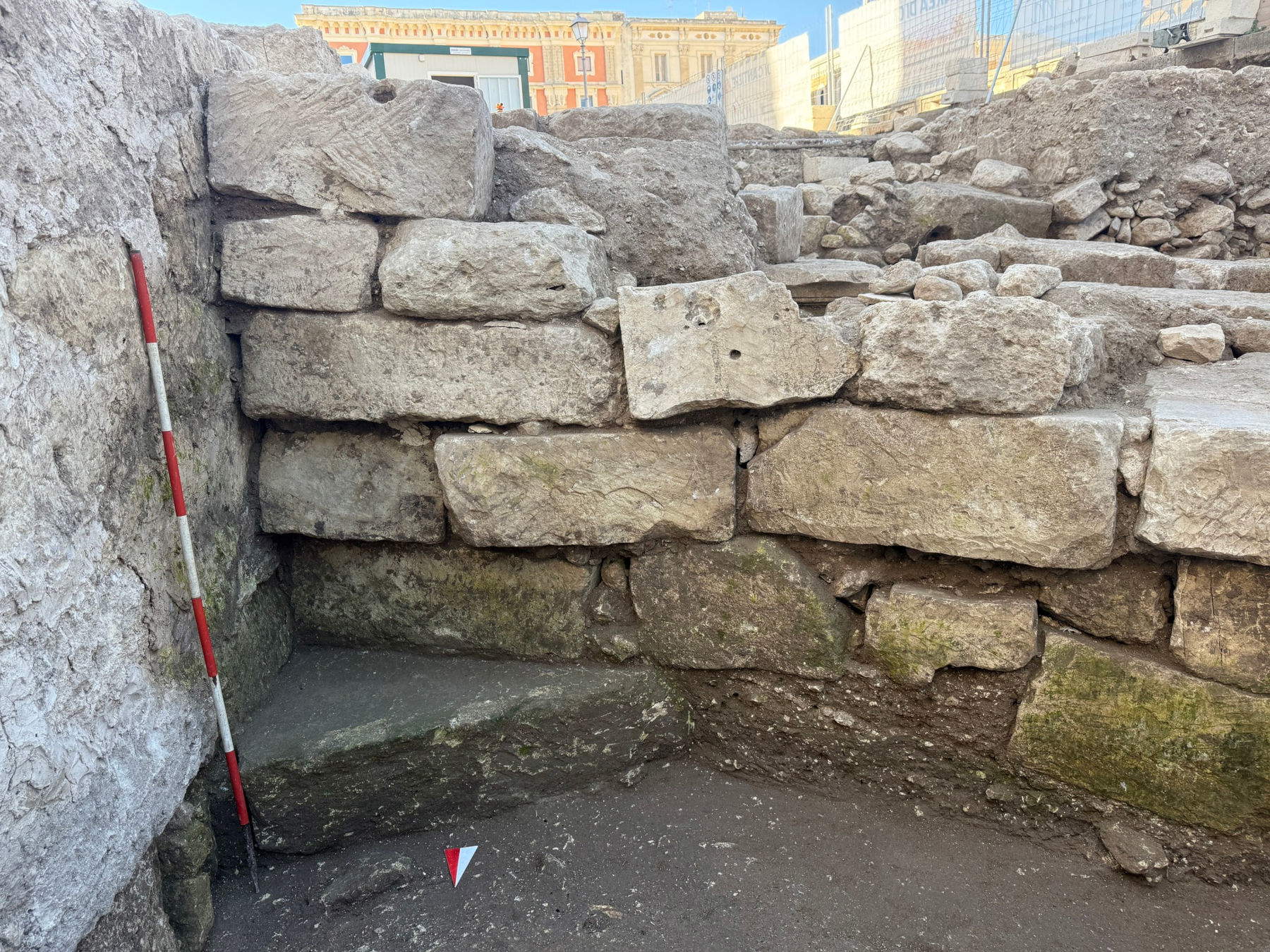
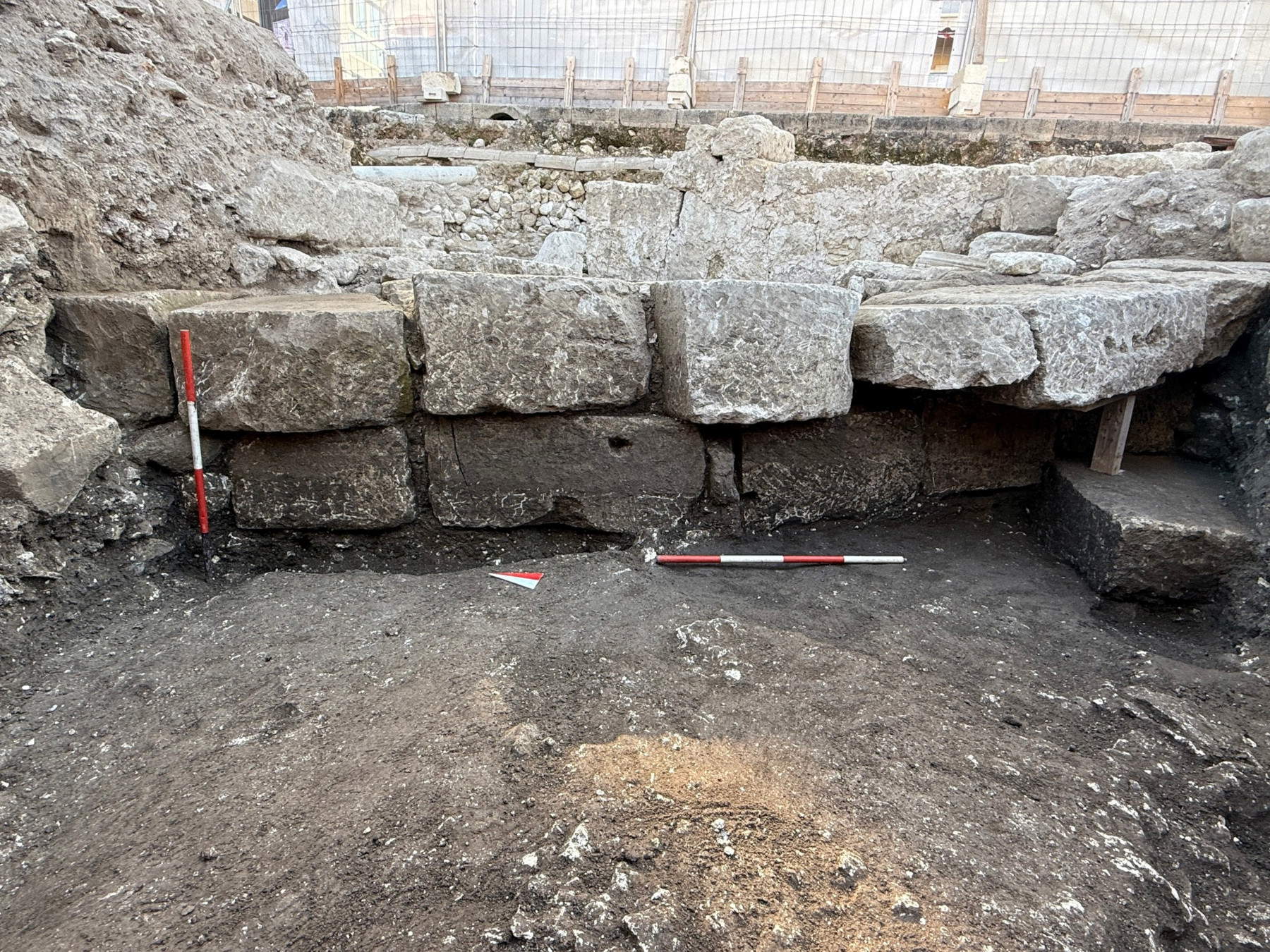
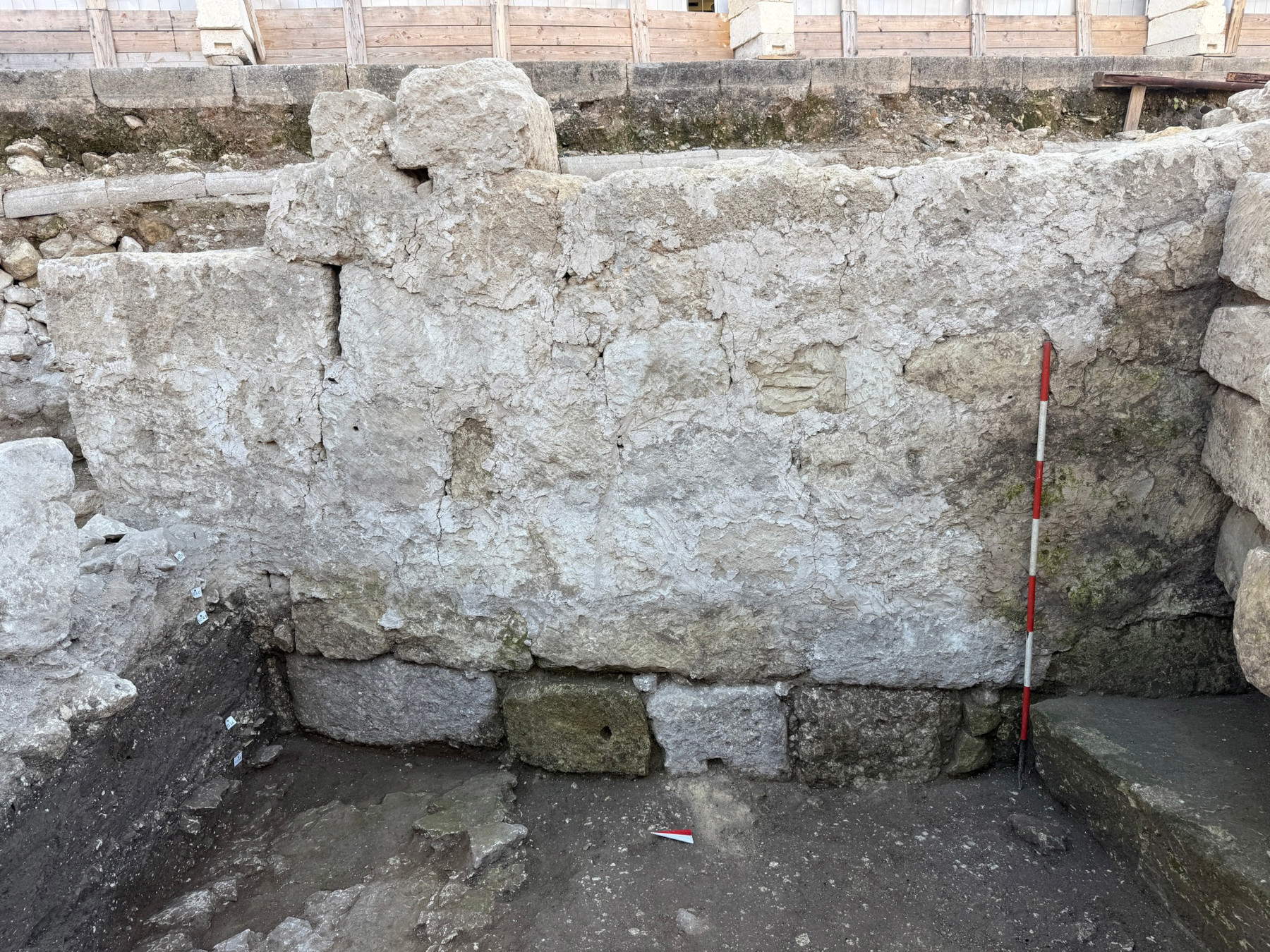
The large rectilinear wall that emerged in Via Alvino bears important similarities to a structure identified in the early 20th century byarchaeologist Cosimo De Giorgi during excavations for the construction of the Bank of Italy headquarters. The hypothesis suggested by scholars is that both evidences are parts of a single defensive complex, built by exploiting the mass of the amphitheater. This interpretation is reflected in similar phenomena documented in other Roman cities, where buildings intended for performances were converted to military purposes. According to this reading, in the Byzantine era the amphitheater in Lecce would have been transformed into a kastron, that is, a fortress that served as a political and military center. Indeed, the geographer Guidone, in the early 12th century, describes a Lecce reduced to a small municipality whose inhabitants were perched on the amphitheater, indirectly confirming the defensive use of the structure.
The ongoing investigation and the study of the materials found are thus expanding knowledge about the city’s archaeological heritage, with particular reference to a period that has so far been poorly documented in material sources. The period between the dissolution of the Western Roman Empire and the Norman conquest left few tangible traces in the urban fabric of Lecce. The present data make it possible to fill part of this gap and offer new perspectives on the transformation of the city center at a time of historical transition. The intervention, in addition to clarifying architectural and defensive aspects, opens broader reflections on the ability of local communities to adapt to profound political and religious changes. The use of the amphitheater as a base for a fortification represents a demonstration of settlement continuity and functional reconversion of monumental spaces.
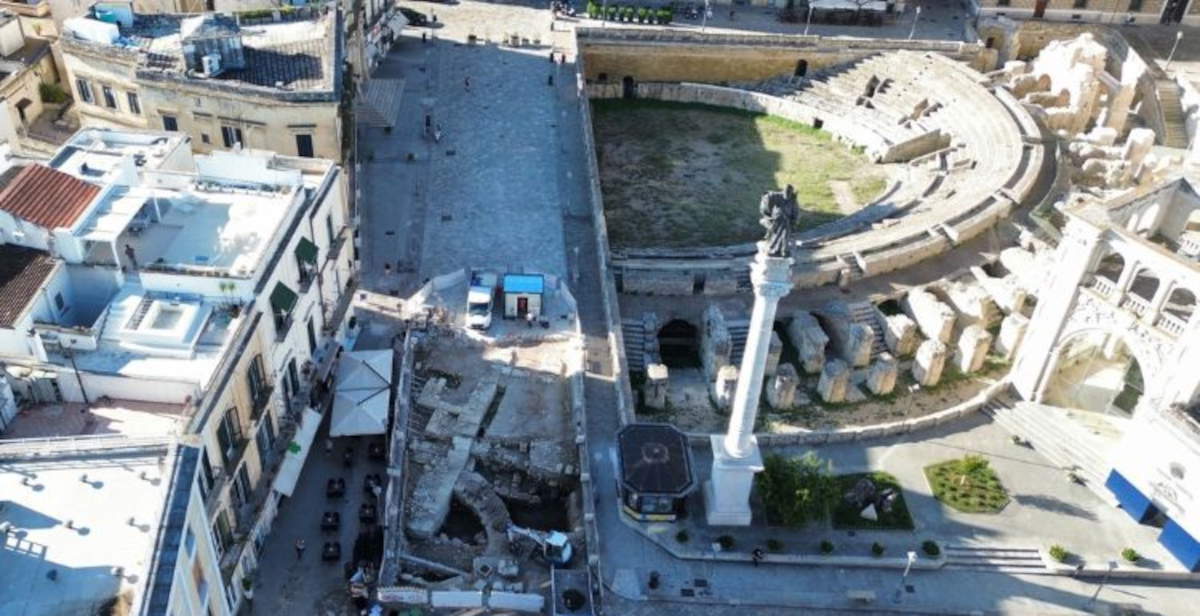 |
| Lecce, early medieval defensive structures discovered next to Roman amphitheater |
Warning: the translation into English of the original Italian article was created using automatic tools. We undertake to review all articles, but we do not guarantee the total absence of inaccuracies in the translation due to the program. You can find the original by clicking on the ITA button. If you find any mistake,please contact us.